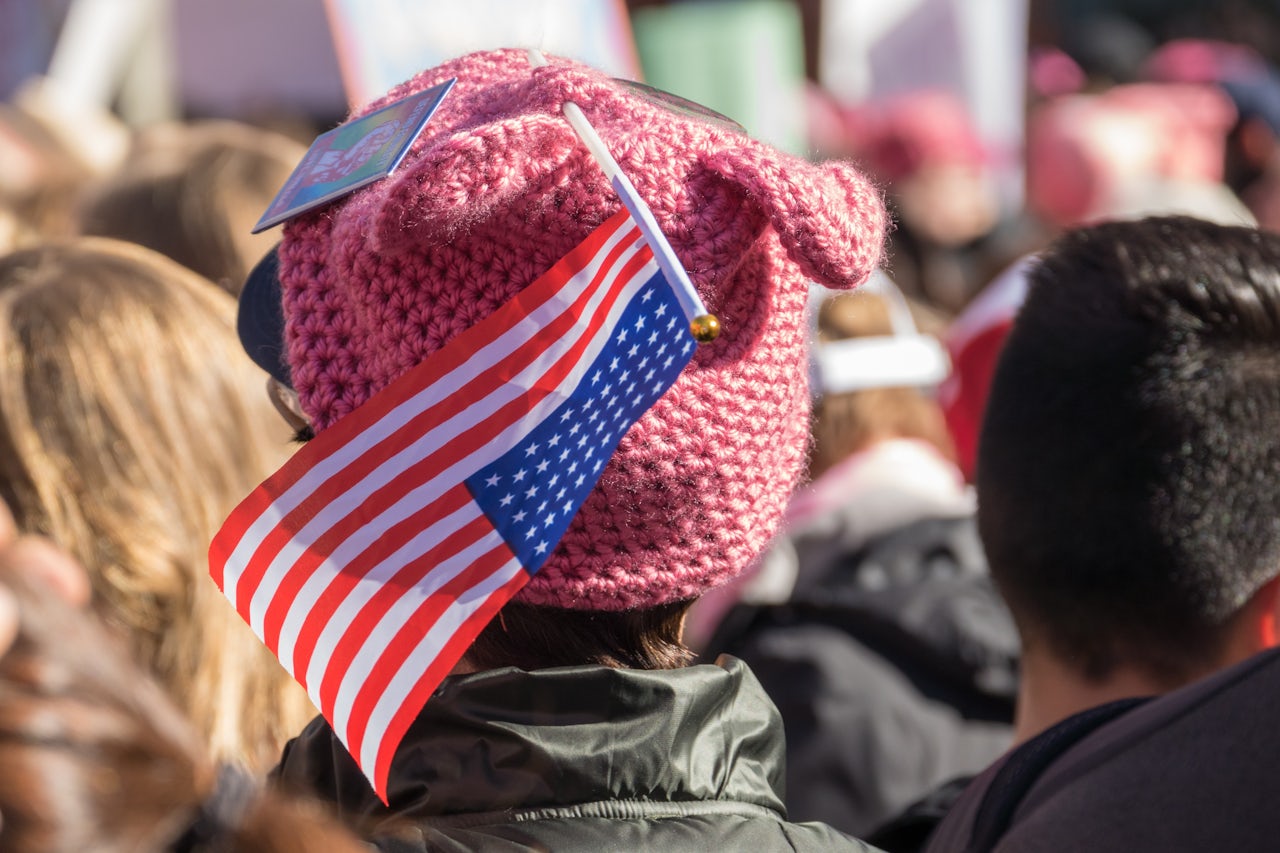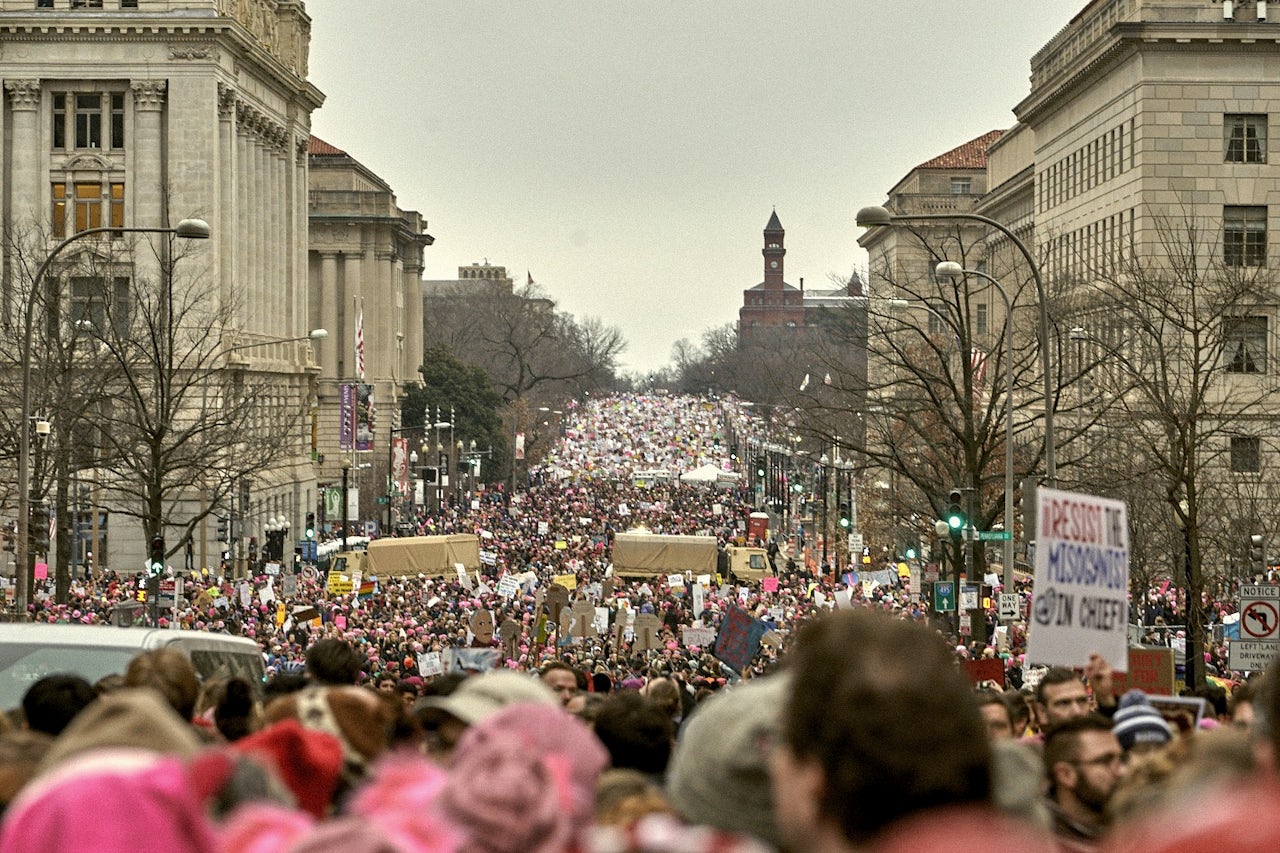It’s become a tradition of mine to miss a gigantic memo in advance of the Women’s March. Last year it was the ubiquitous pink pussy hat, which I first encountered en masse at a rest stop in New Jersey on the way to Washington, DC. This year it was the fact that there was going to be a Women’s March at all. When I eventually heard about it, that I had not heard about it sooner seemed to indicate organizational failure. The details, too, were mildly confusing — the official Women’s March event this January, the kickoff for a national voter registration and mobilization tour called Power to the Polls, was taking place on January 21 in Las Vegas, but other marches, in New York City and elsewhere, were being held on both days. My friends and I couldn’t agree on whether these were “official,” whatever that means. Because I’m a jerk, the outline of a cynical impression began to appear: The message was muddled; the march would not live up to the moving scale of last year, when it was estimated that more than three million people marched worldwide and it was obvious to anyone attending that something major was happening.
And just like last year, from the moment I got on the packed subway, where I watched a little girl with a fuchsia feather on one side of her ponytail and a hearing aid on the other take selfies as the adults around her predicted crowd size, I was won over. This year, the New York march was on Saturday at Central Park West following a rally, and emerging from the Columbus Circle station I was greeted by the only group of counter-protesters I saw all day, five people huddled against a barricade being mocked by a guy chanting, “Lock them up!” into a megaphone. As Yoko Ono observed to The New Yorker, there seemed to be more men at Women’s March 2018.
I wanted to get near the rally, which began around 11:15, and so began a series of conniving maneuvers through Central Park and the surrounding streets; this being extremely annoying, it brought me back into my skeptic’s mindset. Where was I supposed to go? Why were those people being let in to various holding pens and I wasn’t? Who exactly is in charge? On Broadway, groups of women stopped and pointed in front of lululemon, blocking the flow. All large urban marches and parades and protests are usually frustrating, but that didn’t matter to me at the time. There’s something about the Women’s March that makes people hold it to impossible standards: Criticisms usually focus on its failure to represent, accommodate, and impress everyone. Probably has something to do with the name.
Eventually I charmed my way past a volunteer to get to 63rd and Central Park West, where I had a view of the screen broadcasting the rally. This didn’t help my mood. Even without Senator Kirsten Gillibrand’s scheduled speech — she couldn’t get out of DC because the government shut down the night before, after Republicans refused to compromise on the spending bill that will decide the fate of 800,000 undocumented immigrants who came to the US as children—it went on for two hours. Alternating awkwardly with energetic dance and music performances, speakers decried everything we’ve been decrying for the past year: attacks on women’s right to choose, the Affordable Care Act, Muslims, DREAMers, the Supreme Court and judiciary, women’s careers, the environment. Attorney General Eric Schneiderman insisted that this was “no longer just the resistance” but a movement that needed to fight for what we believe in. After the singer Halsey read a poem about sexual assault, back in the crowd, Meika Hollender, a 30-year-old who runs a company that makes organic condoms and tampons, told me that 2017 was “one of the most powerful years for women” in her lifetime. That Trump caused this is horrible but things “may be better in the long run.” Whoopi Goldberg’s elegant rasp didn’t carry well.
The Women’s March should not be understood as a movement, but as something that creates them.
As the crowd became restless, interrupting speakers with chants of “March!” a woman in a green coat held out a small cosmetic jar and asked if I wanted glitter. It’s not usually my style but I couldn’t say no. As she daubed the (aloe-based) sparkles on my cheekbones she noted the lack of publicity around the event was a little disappointing. Women of all ages around us, also glittering, agreed, though a few also told stories about friends or relatives who had gotten really into local politics since the last march. “The women’s movement has been completely energized,” Martine, a woman in her 60s, told me. “I think that as long as Trump is in office, this is going to be a woman’s yearly holiday.” A police officer, likely irritated by the multiplying demands that he move his barricades and let those of us on the sidewalk come into the street, turned down an offer to glam up his look.
When the crowd finally moved, I climbed some steps to look at the size and saw that the haphazard promotional strategy didn’t seem to matter; early reports suggested more than 120,000 people were there. The atmosphere was celebratory — a little weird given the occasionally grave discussion of issues that had taken place just minutes before. Official march DJs began to blast “Could You Be Loved?” through loudspeakers, and protesters turned to revelers, dancing as they moved south. I went down into the street, and a funny sign caught my eye: The words “Just so much bad” were scrawled next to Donald Trump’s head, from which materialized a speech bubble: “I’m the worst.” I tried to eavesdrop on a pair of girls talking about Aziz Ansari, but their thoughts were suddenly drowned out when “Roses” by the Chainsmokers reached its chorus.
It wasn’t until we arrived in front of the Trump International Hotel and Tower that the march began to develop a purposeful political tone. Chants got hoarser and angrier. Middle fingers emerged from the crowd. Guests leaving or entering the establishment were greeted with boos. If having fun felt wrong, it was because the march, until then, lacked the sense that anything bad was happening in the world to protest; there was none of the anxious urgency that came from the unknowns of a Donald Trump presidency and inflamed the 2017 march. If that made the 2017 event feel more momentous, it also made it vexed, as marchers argued about which issues deserved prime billing on the docket. In the year since, some combination of exhaustion and familiarity with the enemy has transformed the Women’s March into an appropriate response to a problem that is effectively summarized by “just so much bad”: It’s become a diverse display of solidarity against Donald Trump. Which is, if you’ll remember the frantic post-election Facebook-event origin story, what it was supposed to be in the first place.
The animating force of the Women’s March is still defensive, which may seem like a problem, but as the day went on, I arrived at a “Whatever works” attitude about this. That the marchers’ topical sign pun of choice has gone from the “pussy” to the gender-neutral “shithole” — and also just shit — suggests the individual concerns of the resistance are broadening. Instead of seeing the message as muddled, I came to see it as merely general, diffuse. The value of the Women’s March doesn't have much to do with the organization itself, but with the fact that so many people will enthusiastically participate, and some of them will get involved in politics and activism elsewhere. The Women’s March should not be understood as a movement, but as something that creates them.
I tore myself away from the tower I heard one woman call “hideous” and “compensating” and turned the corner onto Central Park South, where residents of an apartment building were blasting music from their balcony. The dancing there, unsponsored and spontaneous, wasn’t weird at all. After a few blocks I made my way back to Columbus Circle, where I watched the march pass by and tried to measure the size the only way I could, in time. I got a sense of déjà vu: Like last year, I was proud and happy and totally willing to admit I’d been wrong to be skeptical. In the elevator down to the subway station, a woman wearing a pussy hat and pushing a stroller got on, followed by a couple. “Excuse me,” the man asked, in a South African accent. “What is this demonstration about?”
The mother paused for a moment, trying to figure out the best way to explain. “It’s the big Women’s March…a protest…telling Donald Trump to shove it.” He understood what she was talking about immediately, and laughed. I kept my glitter on for the rest of the day.

